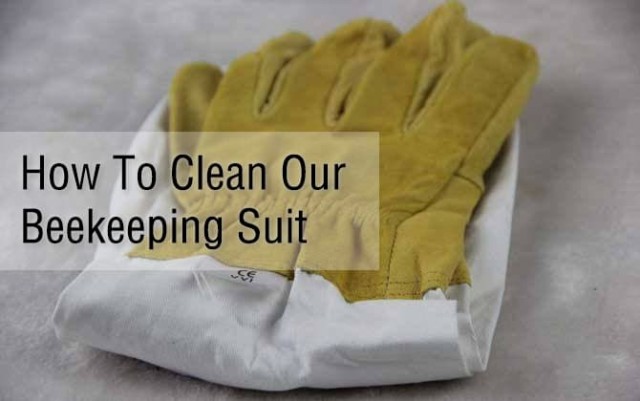If you're thinking about getting into beekeeping, one thing you'll need to invest in is a good beekeeping suit. Your suit can get very dirty in a year, trust us. But it's worth it when you see the honey flowing out of the hive.
The once crisp, white ventilated beekeeping suits becomes dirty and grimy after just a few hours of wear.
Don’t fret, beekeeping suits can be returned to it’s previously. It’s actually a lot like doing regular laundry, but with some considerations. You should always gently wash your beekeeping suit in cool water with a mild soap. Avoid hot water or putting your beekeeping suit in the dryer, as this can damage the fabric. Instead, hang your beekeeping suit to dry in a cool, well-ventilated area.
If you want to make sure your bee's suit or jacket is always clean, it's best to clean it seasonally following the washing procedures of the manufacturer. This way, you can be sure that any dirt, pollen, or other debris is removed from the fabric, and that the bee's suit or jacket is always clean and ready to wear.
The acidity in the venom might eat away at the clothing material, and it also attracts other bees and wasps, who are attracted to the pheromones in the sting.If you're a beekeeper, it's important to keep your beekeeping suit or jacket clean. Not only will it help you to avoid getting stung, but it will also help to keep the bees healthy. Bee venom is acidic and can eat away at clothing, so it's important to clean your gear regularly. You can wash your beekeeping gear in soap and water, or you can purchase a special beekeeping cleanser.
Assuming you are talking about beekeeping equipment: I hope this helps you take care of your equipment because I'm sure you spent good money on your bee suit or bee jacket. It is important to keep your equipment clean and in good condition so that it will last longer and protect you better when you are working with bees.
A bee suit is a great investment, especially if you're serious about beekeeping. However, it's important to take care of your bee suit to ensure it lasts. Ventilated bee suits are especially susceptible to damage from the elements and should be stored properly when not in use. With proper care, your bee suit should last for many years.
To start, remove all of the bee suit removable parts, such as the veil, gloves, and boot covers. Next, turn the suit inside out and zip it up. Then, put the suit in a mesh bag or pillowcase to protect it in the washing machine. Wash the suit on a gentle cycle in warm water with mild detergent. Finally, hang the suit to dry in a well-ventilated area.
Why Should I Wash My Bee Suit?
A good practice is to clean your suit after each use. Inspect it for holes or tears, and repair them as soon as possible. Store your bee suit in a dry, dark place where insects can’t get to it.Taking care of your bee clothing is important. You don’t want to only clean your beekeeping suit when it’s dirty (like a pair of jeans). A good practice is to clean your suit after each use. Inspect it for holes or tears, and repair them as soon as possible. Store your bee suit in a dry, dark place where insects can’t get to it.
You should wash your beekeeping jacket periodically to keep it clean. First, remove all the beeswax and propolis from the jacket using a scraper. Next, wash the jacket in warm, soapy water. Rinse the jacket thoroughly and allow it to air dry.
Over time, bee venom and pheromones can absorb into the fabric of your beekeeping clothing. This can happen through contact with bees or with the materials used to make the clothing. Bee venom can cause an allergic reaction in some people, so it's important to be aware of this possibility if you're wearing beekeeping clothing. Pheromones are believed to play a role in bee communication and may be released when bees are alarmed or threatened. If you're concerned about either of these substances, you can wash your beekeeping clothing regularly to reduce the risk of exposure.
The importance of cleanliness for a beekeeper cannot be understated. Any allergic reaction to bees can increase with prolonged exposure to the venom, so it is crucial that beekeepers take measures to avoid coming into contact with the hive. One way to do this is to wear a clean suit or jacket when working with the bees. This will help to keep the beekeeper safe and prevent any reactions from occurring.
If you're allergic to bee stings, it's important to be aware that bee venom can remain in your clothing after a sting. This can build up over time and cause a more severe reaction if you're stung again. If you know you're allergic, be sure to check your clothing carefully for bee venom after any sting.
If you're going to wear your beekeeping suit, you'll want to make sure it's clean! Plus, you'll want to wash the fabric to remove any sweat, wax, propolis, and dirt. Doing so will help you avoid any unwanted stings, and it'll also keep your suit looking its best.
How Do You Wash Ventilated Bee Suit?
To treat a beekeeping suit or jacket that has been stung, you will need to remove the bee stinger as soon as possible. You can do this by using a pair of tweezers or a knife.
How Often Should I Wash My Beekeeping Suit?
The most important factor in deciding how often to wash a beekeeping suit is the number of times you visit your hives. If you only visit your hives every few weeks, you won't need to wash your suit as often. However, if you're visiting your hives multiple times a week, you'll need to wash your suit more frequently. The environment also plays a role in how often you should wash your suit. If you live in a dry climate, you won't need to wash your suit as often as someone who lives in a humid climate.
Our jacket is one of the most important pieces of clothing we own. It keeps us warm during the winter months and cool during the summer. We wear it nearly every day during the season, and it gets pretty dirty. We usually don't realize how dirty it is until we start harvest. By then, it's practically brown. We usually wash it after honey harvesting.
If you wash your comforter too often, it will begin to wear down the fabric. This is why you don't want to wash it weekly, as it will damage the comforter over time. Try to wash it every two or three months to keep it in good condition.
Details of cleaning bee suits
The main thing is to make sure that the suit is put in a mesh bag to protect it from being ripped or torn in the machine. Additionally, it’s best to use a gentle cycle and cold water. When the cycle is finished, the suit should be hung up to dry rather than put in a dryer.
In terms of what kind of detergent to use, regular laundry detergent is fine.
You need something that will agitate the material and not cause it to bunch up and possibly rip. A better option would be to use a brush or a sponge.
The best way to hand wash a bee suit is to use a little bit of dish soap and some cold water. Use a sponge or cloth to scrub the entire suit, paying close attention to the areas that come into contact with the bees. Rinse the suit thoroughly and then hang it up to dry. It is perfectly fine to hand wash a bee suit, but many machines have settings that can make the job easier. The best way to hand wash a bee suit is to use a little bit of dish soap and some cold water. Use a sponge or cloth to scrub the entire suit, paying close attention to the areas that come into contact with the bees. Rinse the suit thoroughly and then hang it up to dry.
Empty All Pockets
We all know the feeling of reaching into our pockets and finding a sharp object poking us. It's not a matter of a pebble on a machine. It includes papers or notebooks scraps, knife or any other small pieces of equipment that you usually have hidden in your pockets. Over time, these objects will create holes in your pocket, exposing your skin to the fabric and the elements. In extreme cases, it can even create holes in your clothing. While it may not seem like a big deal, it's important to be aware of the potential hazards and take steps to protect your clothing and your skin.
You can put these items in a shoe box or other container. You should always empty the pockets of your queen cages, bits of beeswax, lucky coins, and hive tools before putting them in your washing machine. These items can gum up the works, especially the beeswax, and you don't want that in your machine. Instead, put these items in a shoe box or other container.
Beeswax is a natural wax produced by bees. It melts at around 145°, so you don’t want to run too much of that in through your laundry machine. However, a little bit of beeswax can be used to waterproof your clothes and make them more durable.
Separate The Veil From The Bee Suit
If your bee veil has a zip, unzip it before removing the veil from your head. This will help avoid damage to the delicate screens.
If you have a delicate garment mesh bag, those will work well for the "Fencing" style veils. However, most of us don't have one of those, so you can put your veil in a pillowcase, tied shut. This will protect your veil from snagging on anything and getting damaged.
The centrifugal force in either type of washer could distort the shape of the veil. If you have a large round bee veil, it is best to hand wash it so that the brim is not damaged in the washing machine. This is true for both top load and front load washers. The centrifugal force in either type of washer could distort the shape of the veil.
The veil is an important part of the suit and should be given special care when washing. Hand washing is the best way to clean the veil and it should be set aside to dry separately from the rest of the suit. This is especially important when washing the round veils as opposed to the fencing veils.
The process of removing a veil before washing it in a washing machine is simple and only requires a few steps. First, the veil must be removed from the clothing. Second, the veil must be turned inside out. Third, the veil must be put into a mesh bag. Fourth, the veil must be placed in the washing machine on the delicate cycle. Finally, the veil must be hung to dry. By taking these steps, you can ensure that your veil will not be damaged during the washing process.
The veil is one of the most sensitive clothing parts because it can be easily torn in a washing machine due to the rough movements of the agitator or movement. Even if you are careful and use a delicate or hand-wash cycle, there is still a chance that the veil can be damaged. If you're concerned about your veil, it's best to wash it by hand using a mild detergent.
It's important to check for holes and patch them up as soon as possible.
When removing your veil, it is helpful to take a video or photos of how it was originally placed on your head. This way, you will have a reference when putting it back on after washing it. By taking a few moments to document the process, you will save yourself time and frustration later on.
Pre Treat The Stains
Pre-treating stains before laundering your bee suit is the best way to get them out. Be sure to pretreat as soon as possible after the stain occurs. Rub the stained area with a pretreatment solution or stain remover, using a clean white cloth. Be sure to follow the instructions on the package. Launder the bee suit as soon as possible after pretreating the stain.
When it comes to removing tough stains, pretreating is key. By taking a few extra minutes to treat the stain with a prewash product, you’ll increase your chances of removing it in the wash. Keep in mind that the longer a stain sits, the harder it is to remove, so pretreating as soon as possible is always best.
propolis is a sticky substance that is produced by bees. It is used to seal up small cracks and gaps in their hives. When propolis comes into contact with clothing, it can be difficult to remove. Most laundry detergents will not remove propolis stains. Before putting any clothing item in the washing machine, you should pre-treat most stains, including the propolis stains. There are several ways to pre-treat a propolis stain. You can use a commercial pre-treatment product, or you can make your own mixture of 1 part dish soap to 1 part white vinegar. Apply the mixture to the stain and let it sit for several minutes before laundering as usual.
Place The Bee Suit In The Washing Machine
If you have a jacket or suit that you need to clean, it is best to wash it by itself in the machine. This will help to keep the jacket or suit clean and will also make it easier to clean.
When you are washing your wedding dress and veil, be sure to use the delicate or gentle wash cycle. This is the gentlest option and will help protect your dress and veil. Remember to hand wash the veil to keep it from getting damaged.
You should wash with warm but not hot water, so that it can clean the material, but it won’t damage or shrink the fabric. This way, you’ll be able to clean your clothes without having to worry about them being ruined in the process.
If you're looking to remove dirt from your fabric, it's best to use warm water. Cold water may not be as effective in removing dirt, and hot water may actually shrink your fabric.
Most people use soap to cleanse because it is more effective than water alone. However, some people may prefer to use their favorite fragrance free soap. If you choose to use this type of soap, it is important to remember that it is not as effective as using soap and water. You may need to use more soap to get the same results.
If you are skeptical about how effective water can be at cleaning your jacket, just give it a try. You may be surprised at how much dirt and grime comes out of your jacket with just a little pre-soak in water. If your jacket is anything like ours, it can get exceptionally dirty and a little pre-soak and time in the washer helps our gear get a cleaner.
If you want to keep your washing machine in tip-top shape, avoid adding any fabric conditioner, overly strong detergent or other similar products. These can all damage the machine and shorten its lifespan. Instead, stick to mild detergents and run regular cleaning cycles to keep things clean.
We have found that using the correct amount of bleach when washing beekeepers gear is very helpful. By using bleach, we are able to clean our gear more effectively and prevent the spread of disease.
Honey bees have a very strong sense of smell, so it is best to use a detergent that is not very fragrant. This will help to avoid attracting them to your home.
Dry
A good place to hang your beekeeping suit is in a closet with plenty of airflow. Doing this will help the suit dry out and keep it from getting moldy.
It's a better idea to let your clothes air dry on a hanger. Even using the tumble dry setting on the dryer is not necessary, and can actually damage your clothes. Air drying your clothes is more gentle on the fabric, and will help them last longer.
One of the best things you can do for delicate clothes like beekeeping suits and jackets is to put them on a hanger and air dry until they are completely dry. This will help your gear last longer and keep it from getting damaged by the heat or shrinking in the dryer. Airing beekeeping suits and jackets also helps to prevent mildew and mold from developing, which can cause serious damage to the fabric.
The ventilated material will dry very quickly when on a hanger. This is due to the increased air flow around the material. When hung up, the weight of the clothing will also help to pull the moisture out of the fabric and into the air.
Storing Beekeeper Suit
If you're storing your beekeeping equipment, don't store it wet in the fall because it will grow mildew and be absolutely disgusting the next time you use it. Make sure to clean and dry your equipment thoroughly before storing it away for the winter.
If you're traveling and don't have access to a washing machine, it's better to hang your bee suit up to dry and store it like that. That way, when spring comes around, all of your bee suits are ready to go without any extra effort on your part.
If you're looking for a top quality bee suit that will last you for many years, we recommend the Bee Safe Classic Bee Suit. This suit is made of durable materials and features a comfortable, snug fit. The Bee Safe Classic Bee Suit also features a removable veil, so you can easily take it off when you're not working with bees.
Beekeeper Jacket
The beekeeping jacket made from high quality cotton polyester fabric. The thickness of the jacket keeps bees from your skin.
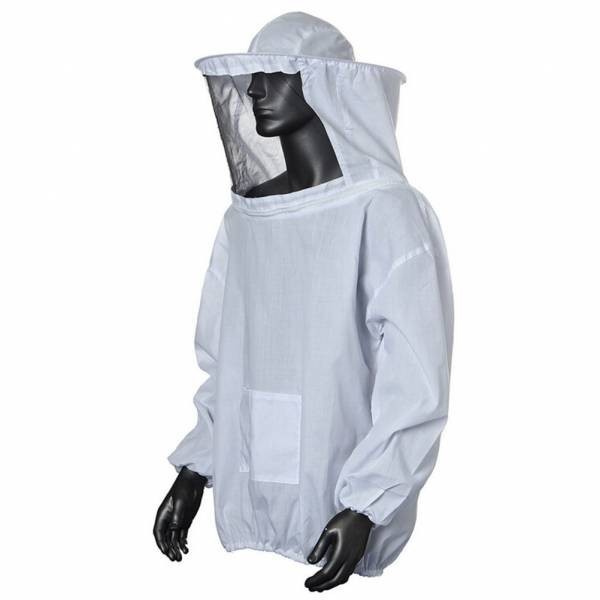
Hooded Veil Beekeeping Jacket
This beekeeping jacket is perfect for those who want to keep their bees close by. The hooded veil provides protection from bee stings, and the jacket itself is made of durable, breathable fabric.The hooded veil beekeeping jacket offers 4 front pockets two w/Velcro and the other open for quick access.
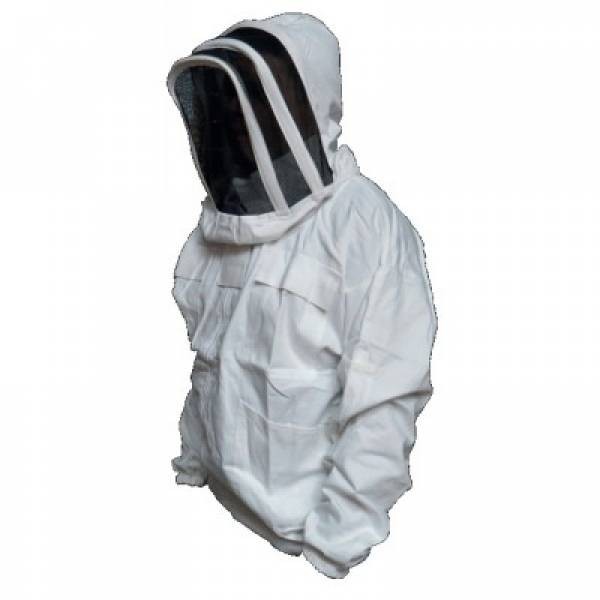
Two Layers Nylon Overall Bee Suit
Looking for a bee suit that will offer you complete protection? Look no further than our Two Layers Nylon Overall Bee Suit! This suit features two layers of durable nylon material that will keep you well protected from stings. The suit also has a zipper front closure for easy on and off, and an elastic waist for a comfortable fit.
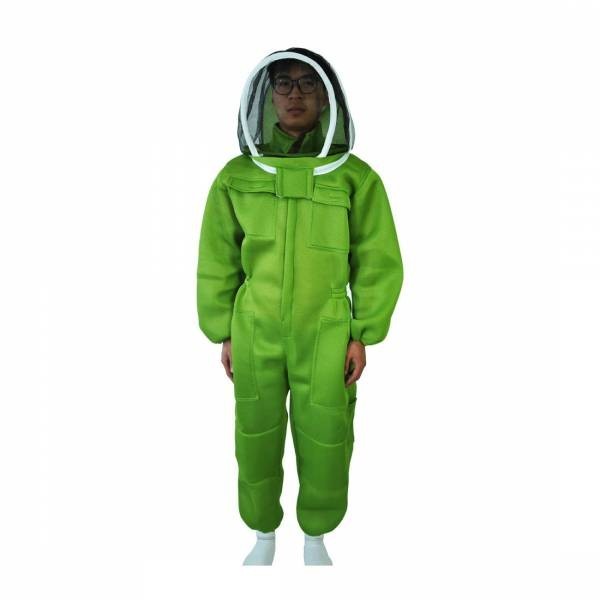
Bee Suit With Square Veil
HonestBee bee suit with foldable square veil, heavy duty brass zippers, durable double-stitched pockets, cushioned kneepads, and deluxe canvas carrying case.
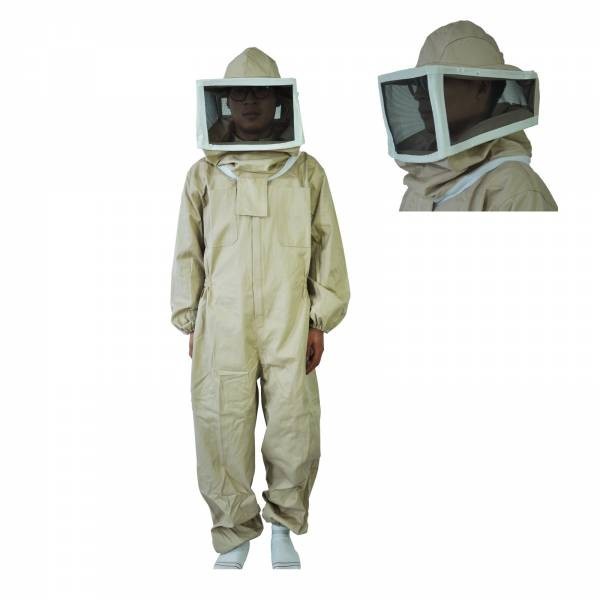
Cowboy Beekeeper Hat With Veil
The cowboy beekeeper hat is the update model of cowboy bee hat.

Longer Ventilate Net Beekeeping Gloves
Longer Ventilate Net Beekeeping Gloves made of durable material, these gloves feature a ventilated design that will allow you to stay cool and comfortable while you work. Plus, the long length will offer full coverage and protection from stings.

Beekeeper Hat With Square Veil
Looking to add some extra protection when working with bees? Check out our beekeeper hat with square veil! This hat is made of 100% cotton for breathability and features a wide brim to keep the sun out of your eyes. The square veil provides ample protection from stings and can be easily removed when not needed.

